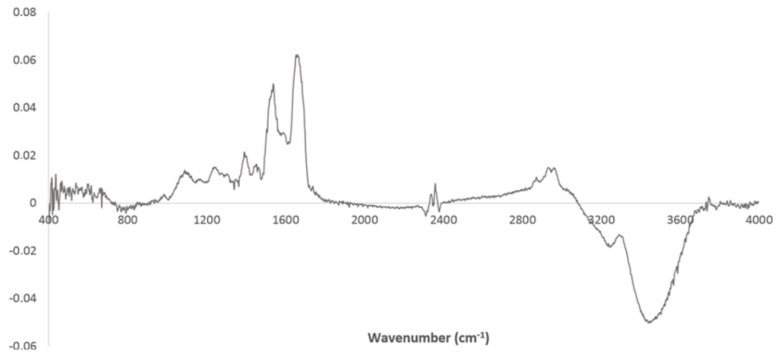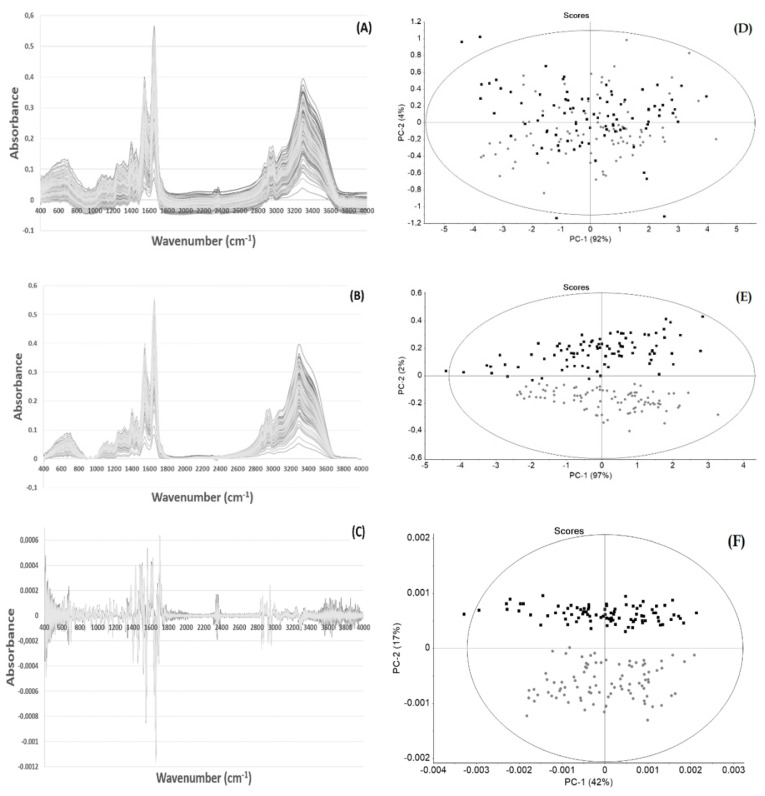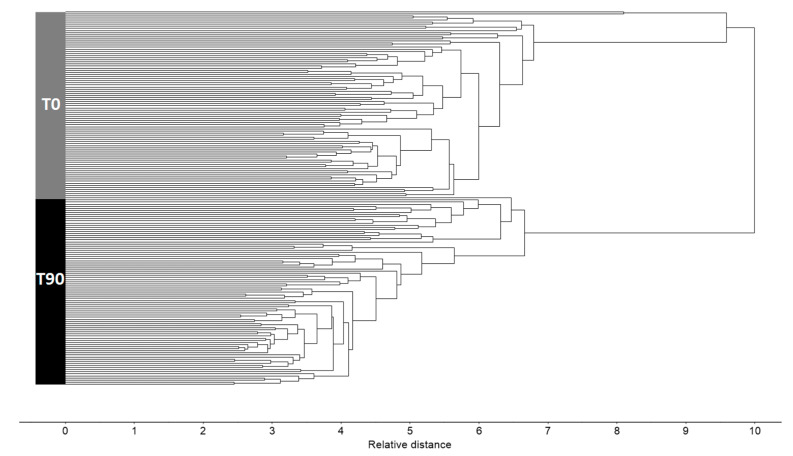一种简单,无标记,高通量的方法来评估表没食子儿茶素-3-没食子酸酯对血浆分子谱的影响。
Q2 Biochemistry, Genetics and Molecular Biology
引用次数: 6
摘要
表没食子儿茶素-3-没食子酸酯(EGCG)是绿茶中主要的儿茶素,具有多种吸引人的生物活性,如抗氧化、抗炎、抗菌和抗病毒活性等。本研究评估了连续90天每天摄入225mg EGCG对人血浆分子谱的影响。采用高通量傅立叶变换红外光谱对30名健康志愿者外周血血浆进行分析。为了在捕获生化信息的同时最大限度地减少物理现象的干扰,通过主成分分析对几种光谱预处理方法的组合进行了评价。采用大气校正与二阶导数光谱相结合的预处理方法,可实现90 d前后等离子体光谱数据的最佳类分离。二阶导数光谱的层次聚类分析也强调了这样一个事实,即在摄入EGCG之前获得的血浆在摄入EGCG 90天后呈现出明显的分子特征。通过偏最小二乘回归判别分析也可以正确预测两个时间段内所有未标记的血浆样品(未用于模型构建)。我们观察到,与服用EGCG之前的样品相比,服用EGCG后收集的血浆样品在成分上的相似性更高。根据EGCG消耗对患者血液、低密度和高密度脂蛋白比值的影响,EGCG消耗显著影响归一化二阶导数光谱中与脂区和蛋白区相关的各种负峰(p < 0.001)。综上所述,在90天内单次摄入225mg EGCG会显著影响所有参与者的血浆分子组成,这提高了人们对长期暴露于EGCG的认识。由于该分析为高通量、无标签、经济分析,可应用于高维分子流行病学研究,进一步促进对生物化合物消费方式和频率影响的认识。本文章由计算机程序翻译,如有差异,请以英文原文为准。



A Simple, Label-Free, and High-Throughput Method to Evaluate the Epigallocatechin-3-Gallate Impact in Plasma Molecular Profile.
Epigallocatechin-3-gallate (EGCG), the major catechin present in green tea, presents diverse appealing biological activities, such as antioxidative, anti-inflammatory, antimicrobial, and antiviral activities, among others. The present work evaluated the impact in the molecular profile of human plasma from daily consumption of 225 mg of EGCG for 90 days. Plasma from peripheral blood was collected from 30 healthy human volunteers and analyzed by high-throughput Fourier transform infrared spectroscopy. To capture the biochemical information while minimizing the interference of physical phenomena, several combinations of spectra pre-processing methods were evaluated by principal component analysis. The pre-processing method that led to the best class separation, that is, between the plasma spectral data collected at the beginning and after the 90 days, was a combination of atmospheric correction with a second derivative spectra. A hierarchical cluster analysis of second derivative spectra also highlighted the fact that plasma acquired before EGCG consumption presented a distinct molecular profile after the 90 days of EGCG consumption. It was also possible by partial least squares regression discriminant analysis to correctly predict all unlabeled plasma samples (not used for model construction) at both timeframes. We observed that the similarity in composition among the plasma samples was higher in samples collected after EGCG consumption when compared with the samples taken prior to EGCG consumption. Diverse negative peaks of the normalized second derivative spectra, associated with lipid and protein regions, were significantly affected (p < 0.001) by EGCG consumption, according to the impact of EGCG consumption on the patients’ blood, low density and high density lipoproteins ratio. In conclusion, a single bolus dose of 225 mg of EGCG, ingested throughout a period of 90 days, drastically affected plasma molecular composition in all participants, which raises awareness regarding prolonged human exposure to EGCG. Because the analysis was conducted in a high-throughput, label-free, and economic analysis, it could be applied to high-dimension molecular epidemiological studies to further promote the understanding of the effect of bio-compound consumption mode and frequency.
求助全文
通过发布文献求助,成功后即可免费获取论文全文。
去求助
来源期刊

High-Throughput
Biochemistry, Genetics and Molecular Biology-Biotechnology
CiteScore
3.60
自引率
0.00%
发文量
0
审稿时长
9 weeks
期刊介绍:
High-Throughput (formerly Microarrays, ISSN 2076-3905) is a multidisciplinary peer-reviewed scientific journal that provides an advanced forum for the publication of studies reporting high-dimensional approaches and developments in Life Sciences, Chemistry and related fields. Our aim is to encourage scientists to publish their experimental and theoretical results based on high-throughput techniques as well as computational and statistical tools for data analysis and interpretation. The full experimental or methodological details must be provided so that the results can be reproduced. There is no restriction on the length of the papers. High-Throughput invites submissions covering several topics, including, but not limited to: -Microarrays -DNA Sequencing -RNA Sequencing -Protein Identification and Quantification -Cell-based Approaches -Omics Technologies -Imaging -Bioinformatics -Computational Biology/Chemistry -Statistics -Integrative Omics -Drug Discovery and Development -Microfluidics -Lab-on-a-chip -Data Mining -Databases -Multiplex Assays
 求助内容:
求助内容: 应助结果提醒方式:
应助结果提醒方式:


